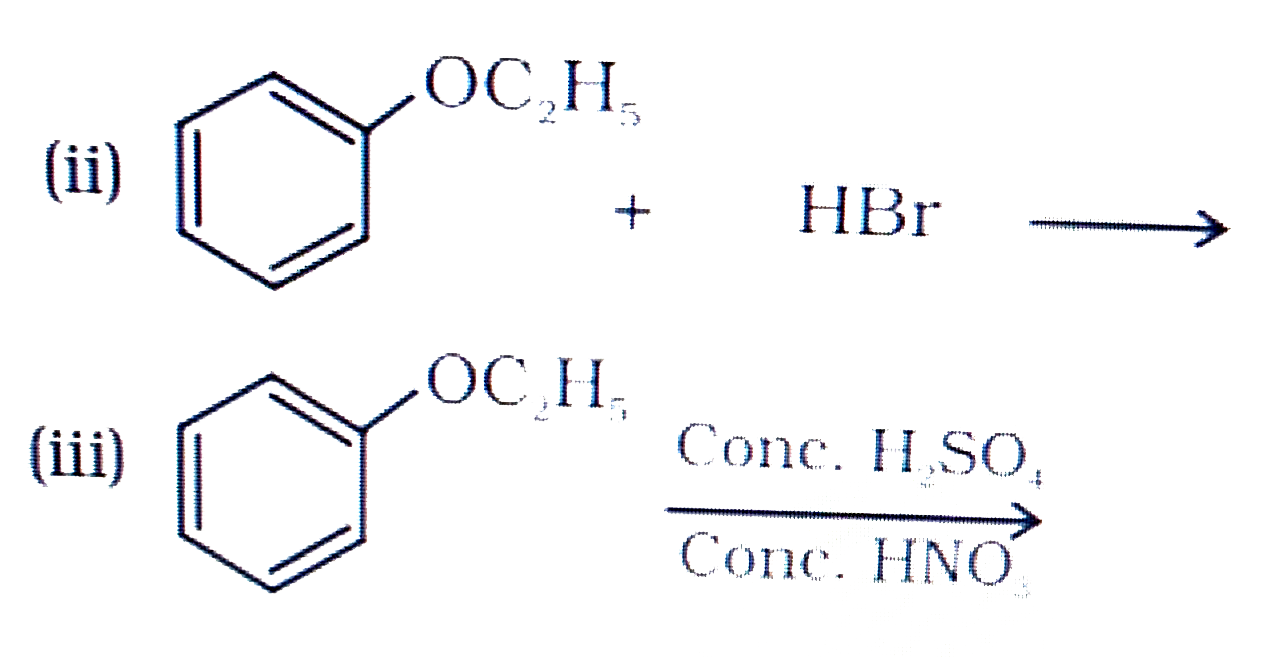Identify the product of following reaction : CH3CHO+HOCH2CH2OH→
To identify the product of the reaction between acetaldehyde (CH₃CHO) and ethylene glycol (HOCH₂CH₂OH), we can follow these steps:
Step 1: Identify the Reactants
The reactants in this reaction are:
- Acetaldehyde (CH₃CHO)
- Ethylene glycol (HOCH₂CH₂OH)
Step 2: Understand the Reaction Type
This reaction is a condensation reaction where two molecules combine with the loss of a small molecule, in this case, water (H₂O).
Step 3: Mechanism of the Reaction
1. Protonation of the Carbonyl Group: The carbonyl oxygen in acetaldehyde can be protonated by an acid catalyst (such as para-toluenesulfonic acid, PTS).
2. Nucleophilic Attack: The hydroxyl group of ethylene glycol acts as a nucleophile and attacks the electrophilic carbon of the carbonyl group in acetaldehyde.
3. Formation of a Hemiacetal: This leads to the formation of a hemiacetal intermediate.
4. Dehydration: The hemiacetal can then undergo dehydration (loss of water) to form a cyclic acetal.
Step 4: Draw the Product Structure
The product of this reaction is a cyclic acetal. The structure can be represented as follows:
- The cyclic structure consists of a five-membered ring where the oxygen from ethylene glycol and the carbon from acetaldehyde form a bond, resulting in a cyclic ether.
Step 5: Write the Balanced Reaction
The overall reaction can be summarized as:
CH3CHO+HOCH2CH2OHPTS−−→Cyclic Acetal+H2O
Final Answer
The product of the reaction between acetaldehyde and ethylene glycol is a cyclic acetal known as acetaldehyde ethylene acetal, along with the release of a water molecule.
---
The reactants in this reaction are:
- Acetaldehyde (CH₃CHO)
- Ethylene glycol (HOCH₂CH₂OH)
This reaction is a condensation reaction where two molecules combine with the loss of a small molecule, in this case, water (H₂O).
1. Protonation of the Carbonyl Group: The carbonyl oxygen in acetaldehyde can be protonated by an acid catalyst (such as para-toluenesulfonic acid, PTS).
2. Nucleophilic Attack: The hydroxyl group of ethylene glycol acts as a nucleophile and attacks the electrophilic carbon of the carbonyl group in acetaldehyde.
3. Formation of a Hemiacetal: This leads to the formation of a hemiacetal intermediate.
4. Dehydration: The hemiacetal can then undergo dehydration (loss of water) to form a cyclic acetal.
The product of this reaction is a cyclic acetal. The structure can be represented as follows:
- The cyclic structure consists of a five-membered ring where the oxygen from ethylene glycol and the carbon from acetaldehyde form a bond, resulting in a cyclic ether.
The overall reaction can be summarized as:
CH3CHO+HOCH2CH2OHPTS−−→Cyclic Acetal+H2O
The product of the reaction between acetaldehyde and ethylene glycol is a cyclic acetal known as acetaldehyde ethylene acetal, along with the release of a water molecule.
Similar Questions
Identify the product of following reaction : CH3CHO+NH3→
View SolutionIdentify the product of following reaction : 2(CH3)2CO+NH3→
View SolutionIdentifity the product of following reaction : CH3CH2CH2IKOH(alc)−−−−−→[A]
View SolutionPredict the formulae of the products of the following reactions:
CH3CH2CHO+Cl2→
View SolutionPredict the products of the following reactions:
(i) CH3−CH2−CH2−O−CH3+HBr→

(iv) (CH3)3C−OC2H5HI−−→
View SolutionWrite structures of the products of the following reactions:
(i) CH3−CH=CH2H2O/H+−−−−−→
(ii)
(iii) CH3−CH2−C | CH3H−CHONaBH4−−−−→
View SolutionWrite the product of the following reaction :
CH2=CH−CH2−OHPCC−−→
View SolutionIdentify the product A and B formed in the following reaction
CH3−CH2−CH=CH−CH3+HCl→A+B
View SolutionWhat is the final product of the following reaction?
CH3CH=CH2+NBS→ A AgCN−−−→B (Major)
View SolutionThe major product of the following reaction is :
CH3CH=CHCO2CH3LiAlH4−−−→
View Solution
